Samoan Food Dishes: Basic Overview
Common Ingredients
Common Cooking Methods
Courses
Meals
Key Taste
Eating Etiquette
Meal Presentation
Culinary Festivals
Influence and Fusion
Popular Types of Samoan Dishes
-
Cakes and Pastries
Samoan cakes and pastries often incorporate coconut, banana, and other local fruits, creating a sweet and savory balance.
The textures range from fluffy and light to dense and moist, catering to various preferences.
-
Bread and Doughs
In Samoan cuisine, bread and dough-based dishes are characterized by their soft, fluffy textures and the infusion of coconut, a staple ingredient in the region.
These breads and doughs often serve as a canvas for sweet and savory toppings or fillings, embodying the tropical essence of Samoa.
-
Desserts
Samoan desserts are a celebration of the islands’ bounty, featuring the rich, creamy textures of coconut milk combined with the sweetness of tropical fruits and local cocoa.
These desserts range from thick, soup-like concoctions to baked goods soaked in sweet syrups, offering a variety of flavors and textures.
Samoan dishes are culinary offerings well-known throughout Samoa, an island nation in the heart of Polynesia. They demonstrate Samoa’s culinary ties with neighboring Pacific islands, as well as hints of outside flavors in local food.
In particular, American, Chinese, and Indian specialties contribute considerably to the identity of Samoan cooking traditions, which are also influenced by nearby elements, such as delicacies in Tonga.
The key to Samoan cuisine lies in the bounty of its tropical fruits, seasonal vegetables, and local meat and seafood, all cooked with minimal spices to let the natural flavors shine. That’s why Samoan dishes are among the most favored dishes in Oceania.
Whether of indigenous origin or brought by immigrants, the dishes all showcase the natural flavors, local ingredients, and unique cooking traditions characterizing Samoan cuisine.
In discussing traditional Samoan food’s main characteristics, I’ll also share insights into its global appeal and healthy attributes. Overall, popular Samoan dishes include bread, taro leaf-wrapped dishes, soups, stews, curries, and sweet treats.
For each entry, you will know about its origin, type of food, main ingredients, cooking method, dishes to pair with it, or additional information like alternative names, history, and countries where it is also enjoyed.
Next, you will learn about the key features of Samoan cooking (particularly the unique umu). Get ready to dive into the heart of Samoa, one bite at a time!
Here are the 13 most popular Samoan dishes you should know about:
13 Popular Samoan Dishes with Filters
Here are 13 most popular dishes in Samoa. You can also use filter options for ingredients, taste, cooking methods, dish types, course, etc., to help you pinpoint specific dishes that you’re interested in.
Besides, I also introduce some main characteristics about Samoa’s most common dishes, its national delight, traditional, exotic, fusion creations, and street food.
Vendors and markets on the island offer sweet snacks, cakes and pastries, or savory quick bites.
It’s a dish that uses local yet unique produce and the artistry of Samoan cooks in creating meals that are unfamiliar to newcomers.
Influences from European, Asian, and American cuisines have shaped Samoan food, resulting in fusion dishes that marry traditional Samoan ingredients with global flavors.
Pani Popo
- Street Food
- Traditional
Pani popo is a traditional Samoan dessert featuring sweet, fluffy bread rolls soaked in a rich coconut sauce. Its charm has transcended Samoa, finding fans in places like Hawaii.
These rolls are known for their soft texture and the decadent coconut milk glaze that they’re baked in, which adds a sweet and tropical flavor to the bread.
Palusami
- National
- Traditional
Palusami, also known as lū, rukau, and lu’au, is a beloved Samoan dish made from taro leaves filled with coconut milk, often with added ingredients like onions for extra flavor.
It’s traditionally baked until the leaves are tender and the coconut milk turns into a creamy sauce. This dish is a national dish in Samoan cuisine and is served on many local festivals and special occasions like New Year, Christmas, Easter, family gatherings, etc.
This dish can vary in preparation, with some versions including meat or fish wrapped in the taro leaves alongside the coconut milk.
Samoans prepare palusami by steaming. This iconic wrapped dish served as a takeaway or lunch alongside baked taro, macaroni salad, rice, or green bananas.
Besides Samoa, you can try palusami throughout Oceania, like in Tonga, Fiji, Hawaii, and the Cook Islands.
SapaSui
- Fusion
- Street Food
- Traditional
Sapa sui, also known as Samoan chop suey, is a stir-fried noodle dish with immense popularity in Samoa. It incorporates cellophane noodles, succulent pieces of meat like beef, pork, or chicken, and vegetables such as bok choy, bell peppers, carrots, and onions, stir-fried in a wok.
In addition, various spices and condiments are needed for making sapa sui. Locals often pair the Samoan stir-fried noodles with rice or baked taro.
Sapa sui’s roots trace back to the recipes Chinese-American immigrants brought to Samoa in the 19th century. This affordable dish is the Samoan spin on the classic chop suey. Another Samoan favorite of Chinese origin is keke pua’a, a steamed pork bun.
Fa’alifu Talo
- Traditional
Fa’alifu talo, also known as fa’alifu kalo, is a traditional Samoan dish that combines taro (a root vegetable known as Talo in Samoa) with a rich coconut cream sauce.
The preparation involves boiling taro and then mixing it with freshly made coconut cream, resulting in a creamy and hearty dish. This method of cooking with coconut cream is referred to as “fa’alifu” and is a common way to prepare various starchy foods in Samoa.
The dish is a staple in Samoan cuisine and is often found at gatherings, reflecting its cultural significance.
Fa’alifu fa’i and fa’alifu ulu are two well-liked variants of fa’alifu talo. They swap out the taro for green bananas and breadfruit, respectively.
Panikeke
- Street Food
Panikeke is a traditional Samoan dish resembling small golden balls, similar to pancakes but with a distinctive round shape. The main ingredients include flour, sugar, salt, eggs, milk, and baking powder.
Typically served for breakfast, Panikeke can be enjoyed plain or flavored, often accompanied by fruit, jams, or whipped cream.
Koko Araisa
- Street Food
- Traditional
Koko araisa is a traditional Samoan dessert known for its simple yet comforting flavors. It consists of rice mixed with coconut milk, sugar, and cocoa powder, resulting in a thick, dark-colored dish reminiscent of a soup.
This dessert can be enjoyed either hot or chilled and is particularly favored by children, often served for breakfast. The use of authentic Samoan cocoa, known as koko Samoa, is recommended to achieve the distinct, rich flavor that characterizes this dish.
Paifala
- Street Food
- Traditional
Paifala is a traditional Samoan pie, often shaped into half-moons, resembling a calzone. These pies are well-known for their sweet filling, typically made from crushed pineapple mixed with sugar, milk, and cornstarch to create a thick, custardy texture.
The crust is usually flaky and may incorporate coconut elements, providing a unique taste and texture that complements the sweet pineapple filling. The pies are baked until golden, offering a delightful blend of sweet and savory flavors that are characteristic of Samoan cuisine.
Fa’ausi
- Traditional
Fa’ausi is a traditional Samoan dish that combines two key components: a dense coconut bread known as fa’apapa, and a sweet coconut caramel sauce.
The fa’apapa component is usually made from copra (dried coconut flesh), though variations may include other ingredients like mashed pumpkin, banana, or taro, contributing to its dense texture.
To complement the bread, a creamy caramel sauce is prepared using coconut milk, with the sugar typically caramelized over hot rocks before being poured over the baked taro cubes or fa’apapa. This dish is generally enjoyed as a snack or dessert.
Kale Moa
- Fusion
- Traditional
Kale moa is a traditional Samoan chicken curry known for its delightful balance of sweet, savory, and spicy flavors. This dish features chicken pieces cooked with a variety of spices including curry powder, ginger, and garlic, along with vegetables like potatoes, carrots, and celery.
Coconut milk is used to create a rich and creamy sauce, enhancing the overall flavor profile of the dish. Kale Moa is enjoyed for its complex taste that combines the best elements of Samoan cuisine.
In some ways, Kale is the Samoan take on chicken curry, which Indian laborers brought to Samoa in the 19th century.
Kopai
- Street Food
- Traditional
Kopai is a traditional Samoan dish that resembles dumplings and can be served in various ways, including with coconut milk, caramel sauce, and syrups.
The preparation involves a dough made from ingredients like flour, sugar, and water, which is then shaped into small, tender balls and cooked. The exact taste and color of Kopai can vary depending on the specific ingredients and methods used in its preparation.
If you prefer a hint of cacao, opt for kopai koko since it includes Samoan cacao. To heighten the flavor, consider drizzling some caramel sauce on top.
Vaisalo
- Traditional
Vaisalo is a Samoan dish often described as a cold coconut porridge. It is a comforting food known for its sweet coconutty flavor.
The porridge is made by blending coconut flesh and coconut water, then thickened with tapioca starch and simmered to achieve the desired consistency. Vaisalo is appreciated for its wholesome and enjoyable natural taste.
Oka I’a
- Exotic
- Traditional
Oka I’a is a traditional Samoan dish reminiscent of ceviche, made from raw fish, usually tuna, marinated in citrus juice, often lemon or lime. This marination process “cooks” the fish without heat, turning its flesh opaque.
The dish is then mixed with coconut milk, giving it a rich, creamy texture. It’s typically enhanced with the addition of diced onions, green onions, tomatoes, and sometimes cucumber, adding a refreshing crunch and variety of flavors.
Fai’ai Eleni
- Traditional
Fai’ai eleni is a savory Samoan dish known for its rich and creamy texture, typically made with fish, coconut cream, onions, and leafy greens like taro leaves or spinach.
The dish is characterized by its method of preparation, where the ingredients are baked together, allowing the flavors to meld beautifully. While traditionally mackerel is used, variations with tuna are common due to its availability and less fishy taste.
The addition of mayonnaise, along with spices like white pepper and ground black pepper, enhances the creaminess and flavor profile of the stew. This dish is often enjoyed with rice, making for a comforting and satisfying meal.
What Are the Characteristics of Samoan Cooking?
Samoan cooking is distinguished by several key characteristics:
Remember to share this list of popular Samoan foods with your friends and leave a comment to tell everyone about your best experience in Samoan culture. Your engagement can introduce more people to the exotic cuisine of Samoa!



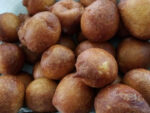
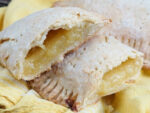



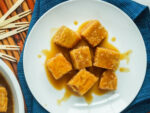
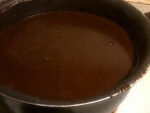

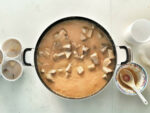
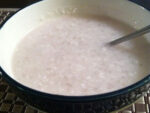
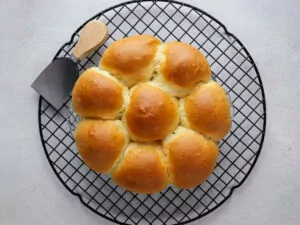
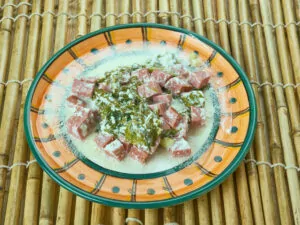
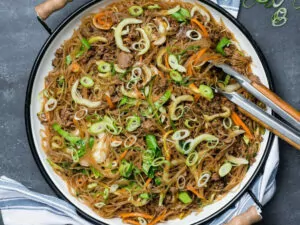
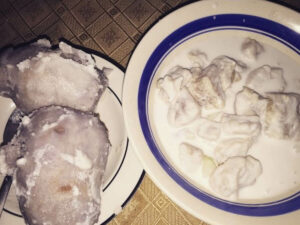
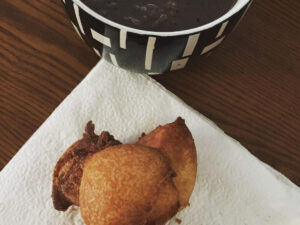
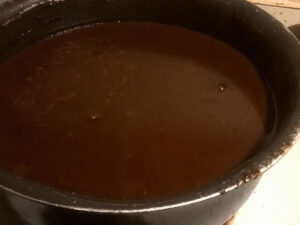
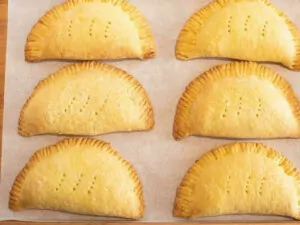
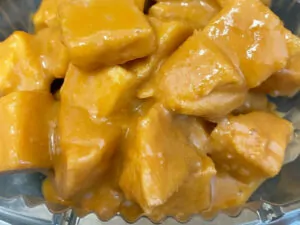
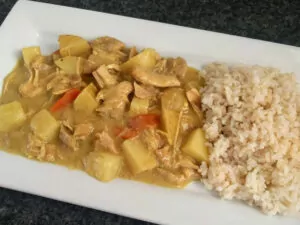
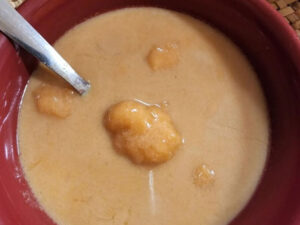
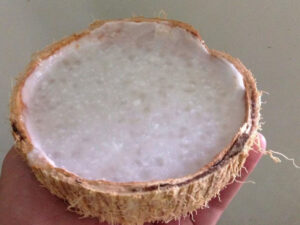
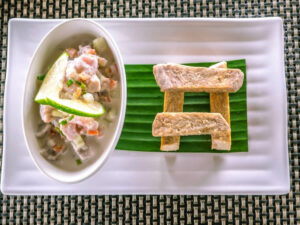
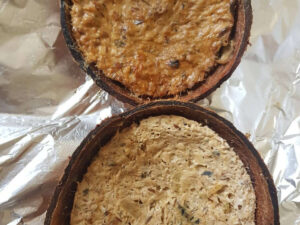
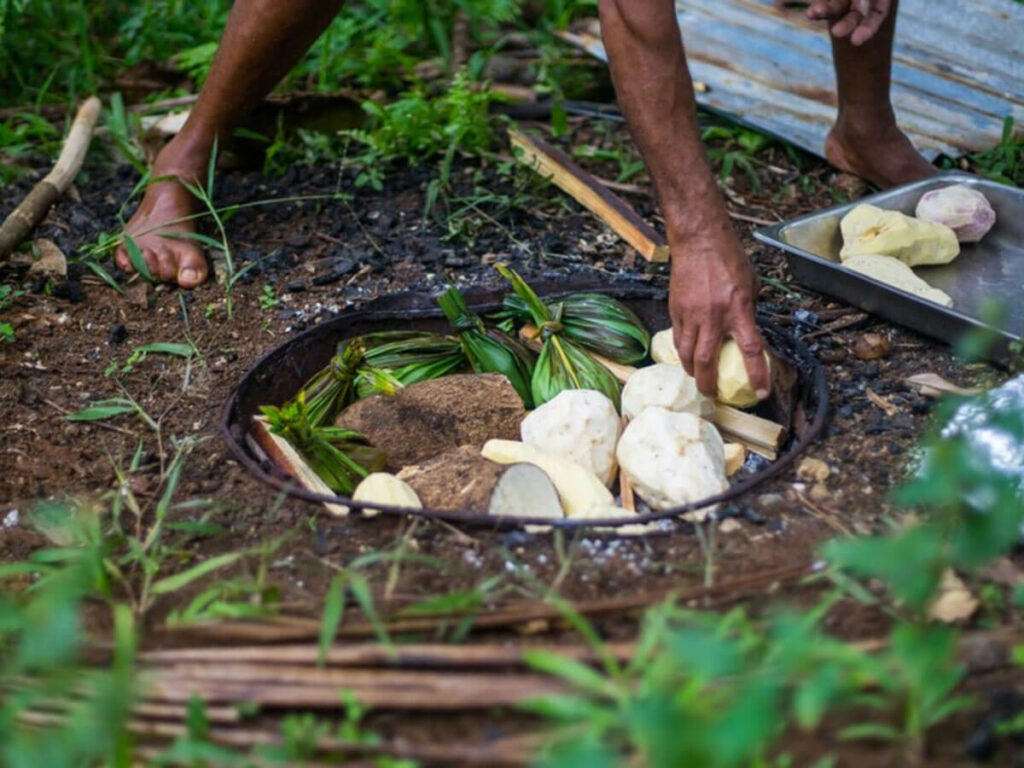
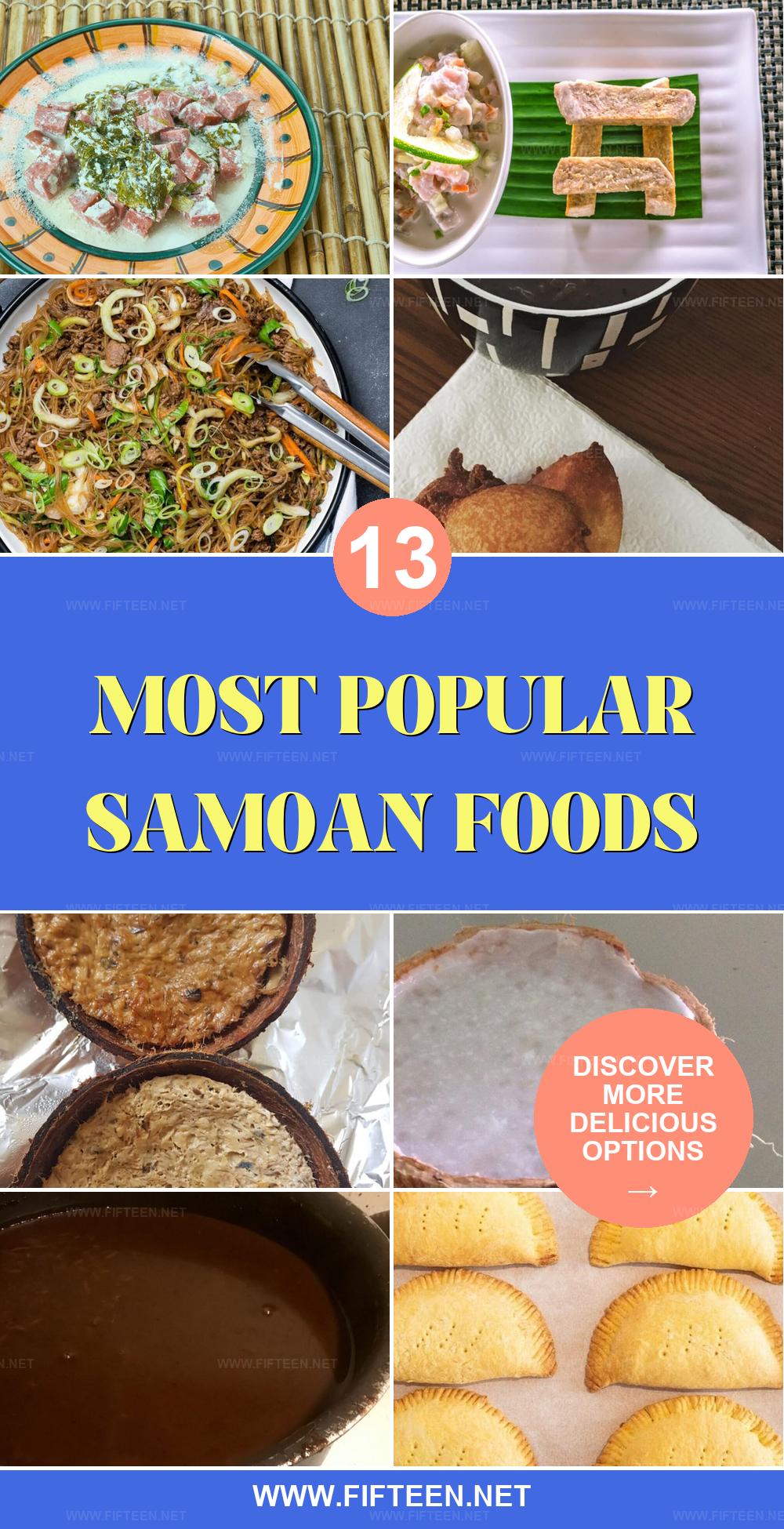
Jamie Scott
Editor in Chief, Senior Content Writer
Expertise
Home Cooking, Meal Planning, Recipe Development, Baking and Pastry, Food Editor, Cooking-video Maker, Western Food Evaluation Expert
Education
Le Cordon Bleu College of Culinary Arts
Local Community College, New York, NY
Jamie Scott is a skilled culinary expert and content creator specializing in Western cuisine. With over 15 years in the culinary field and formal training from Le Cordon Bleu, Paris, Jamie deeply understands how to blend nutrition with delicious flavors. His passion for cooking matches his commitment to making healthy eating accessible and enjoyable.
On Fifteen.net, Jamie brings a fresh perspective to classic dishes and beverages, offering readers insightful recipes, cooking tips, and a fresh view on meal planning that emphasizes taste, health, and simplicity.